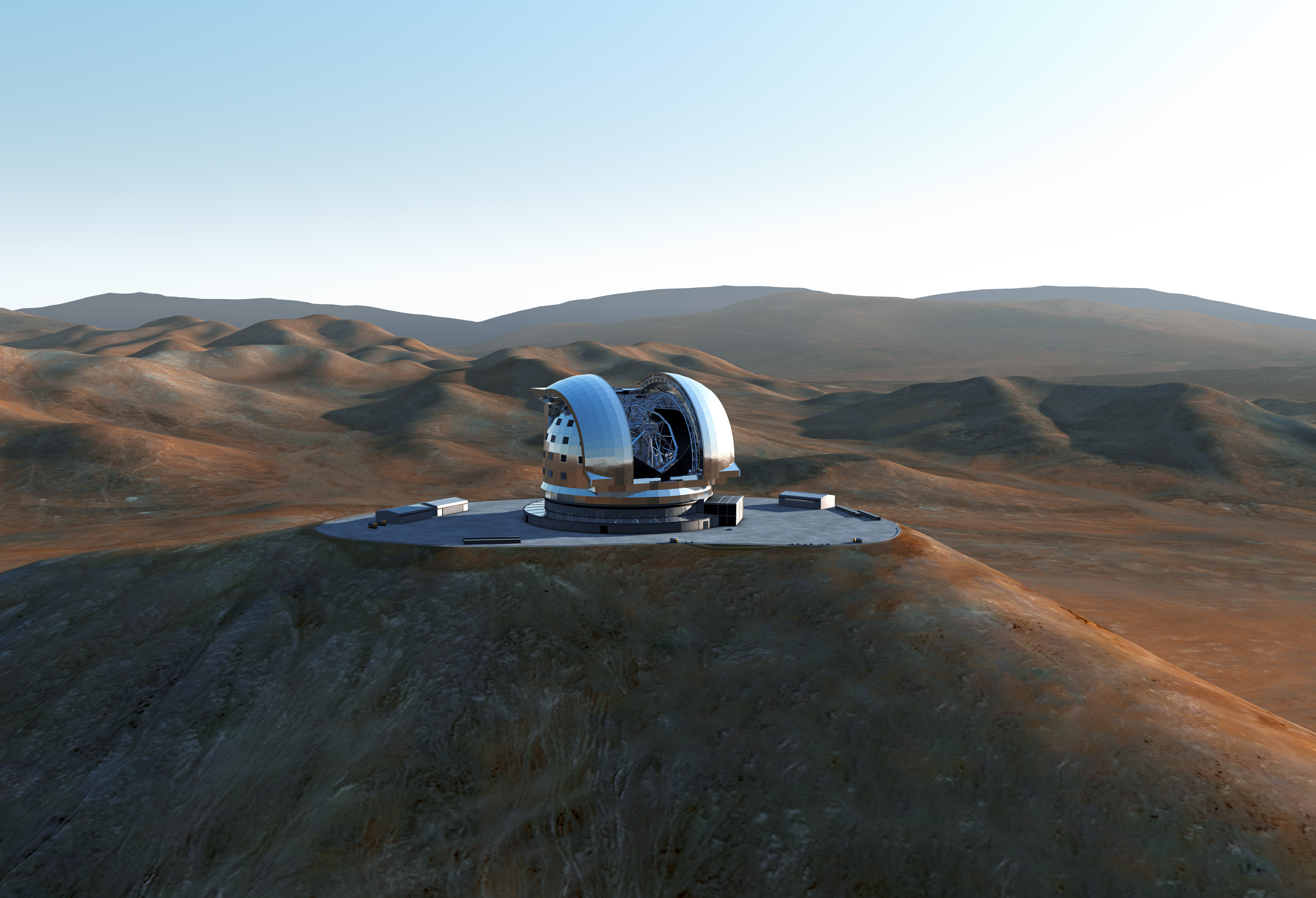World's Largest Telescope Project Gets Green Light

A European project to build the largest optical telescope on Earth took a big step closer to becoming reality Monday (June 11), when final approval came from the scientific consortium backing the new observatory.
Plans for the mega-telescope, appropriately called the European Extremely Large Telescope (E-ELT), were approved by the governing council of the European Southern Observatory (ESO), officials announced Monday.
"This is an excellent outcome and a great day for ESO," ESO Director General Tim de Zeeuw said in a statement. "We can now move forward on schedule with this giant project."
The E-ELT will be a 129-foot (39-meter) segmented-mirror telescope sited atop a mountain called Cerro Armazones in northern Chile, close to ESO’s Paranal Observatory. It will be many times more sensitive than any other instrument of its kind, researchers said.
The huge telescope will collect at least 12 times more light than today's largest optical telescopes, allowing astronomers to probe a variety of high-priority cosmic questions. Scientists will use it to help search for habitable alien planets, for example, and to study the nature and distribution of dark matter and dark energy, the mysterious stuff thought to make up most of our universe but which astronomers have yet to detect directly.
"The telescope is set to revolutionize optical and infrared astronomy," said Isobel Hook of the University of Oxford, the United Kingdom's E-ELT project scientist, in a statement. "Its unique combination of sharp imaging and huge light collecting area will allow us to observe some of the most exciting phenomena in the universe in much better detail."
The E-ELT project is not quite ready to break ground yet, however. Construction cannot begin until provisional votes from four more of the ESO's 15 member states have been confirmed and 90 percent of the required funding has been secured, officials said.
Get the Space.com Newsletter
Breaking space news, the latest updates on rocket launches, skywatching events and more!
Building the E-ELT is expected to cost 1.083 billion euros, or roughly $1.35 billion at current exchange rates. ESO officials have said that construction is expected to begin sometime this year, with the telescope becoming operational in the early 2020s.
Follow SPACE.com on Twitter @Spacedotcom . We're also on Facebook and Google+.
Join our Space Forums to keep talking space on the latest missions, night sky and more! And if you have a news tip, correction or comment, let us know at: community@space.com.

Space.com is the premier source of space exploration, innovation and astronomy news, chronicling (and celebrating) humanity's ongoing expansion across the final frontier. Originally founded in 1999, Space.com is, and always has been, the passion of writers and editors who are space fans and also trained journalists. Our current news team consists of Editor-in-Chief Tariq Malik; Editor Hanneke Weitering, Senior Space Writer Mike Wall; Senior Writer Meghan Bartels; Senior Writer Chelsea Gohd, Senior Writer Tereza Pultarova and Staff Writer Alexander Cox, focusing on e-commerce. Senior Producer Steve Spaleta oversees our space videos, with Diana Whitcroft as our Social Media Editor.










